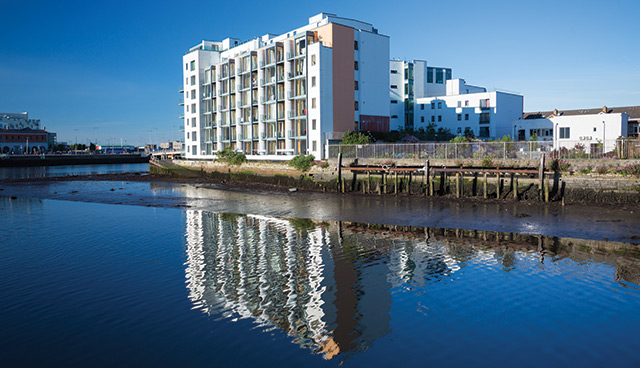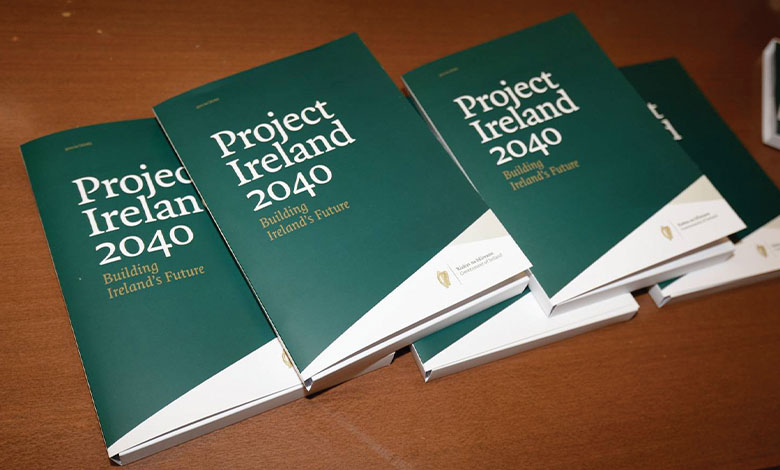
UN report on housing crisis
29th August 2019
Paula Bradley MLA: Chairperson of the Committee for Communities
10th July 2020The ‘new build’ numbers game

For both the public and the media, meaningful metrics are needed so we can see how society is changing – it is why we do a census every five years – but also to evaluate the performance of politicians and policymakers. Senior lecturer in housing at The Technological University Dublin, Lorcan Sirr writes.
Academics, analysts, strategists, businesspeople and even politicians all agree that good data is important for making good decisions. Those in business in particular know that cash is king, but data is the kingmaker.
Politicians, and those who serve them, are frequently wary of useful data being put in the public realm. I have experienced politicians deny the existence of better data, refuse to release meaningful data, defend incomprehensible data and deliberately use wrong data to justify their actions. When confronted with such approaches it is reasonable to ask: what are they hiding? Intransigence, obstruction and obfuscation is typically confirmation that something is statistically amiss.
Good data, particularly around issues concerning public expenditure, is only of real benefit if it is both available publicly and in a format that people can understand.
House completion
In 2016, myself and architect Mel Reynolds queried annual new build housing completion numbers. After rigorous research across multiple databases we could prove beyond reasonable doubt that the annual completion numbers for new housing were grossly overreported. We received equally rigorous pushback from both the then minister and his officials insisting their methodology was impeccable: the numbers had always been calculated in this way and would continue to be, apparently.
To his credit, the subsequent housing minister Eoghan Murphy gave the job of counting new dwelling completions to the CSO, and it found that from 2011-2017 the Department of Housing had overestimated new completion statistics by some 30,000 units. More than one-third of the 85,154 houses supposedly built in the period simply did not exist.
Such a significant correction to official figures raised important questions, particularly about the need to have independent collation and monitoring of politically important public data.
Homelessness
In other areas of housing there are also issues with the way the data is calculated and presented. For example, Section 10 of the Housing Act 1988 has a definition of homelessness which means it does not count people ‘couch surfing’, homeless people in hospitals and prisons, those in direct provision centres or households in domestic violence refuges. Rather bizarrely, nor do homeless statistics include those sleeping rough, the most homeless of the homeless.
Housing delivery streams
The calculation of social housing new build output is another area of contention. The way in which social housing output is presented via Rebuilding Ireland progress reports, with a use of cumulative figures to maximise purported progress towards targets, is distinctly unhelpful. It takes effort and know-how to work out annual totals.
The definition of what constitutes ‘new build’ is itself an issue encompassing as it does the world, its mother and the kitchen sink. The term does not just include social housing newly built by local authorities but is bundled with social housing newly built by approved housing bodies (AHBs). The wide-ranging definition also includes new houses built by others and bought by local authorities and AHBs, known as turnkeys.

The common thread linking words and statistics is that housing policy since the introduction of Rebuilding Ireland has increasingly become a numbers game based on the imperative of reaching targets for political gain.
This is where the concept of ‘new build’ gets stretched somewhat, from meaning newly built by the state or its agents, to a ‘new house’, no matter who built it. (Yes, this matters for being able to measure state activity and progress, as well as measuring value for money.)
The heading ‘new build’ also includes houses brought back into use by regeneration, and until 2017, included Part V housing which was delivered by developers. We can also throw in ‘voids’, which are existing social housing units that have been made ready for re-letting at a cost more than is normal for a ‘casual re-let’ and given to new tenants. They are most certainly not ‘new build’ housing. There is also a small number of leased Part V housing included.
Obfuscation
Overall, there are nine different streams of housing delivery. For analysts this makes life hard, and the way housing statistics they are presented means only the most determined will be able to analyse them. For 2019, more than 1,900 individual entries are listed over 100 pages of a pdf document which must be studied line-by-line in order to categorise each one as turnkey, local authority build, and so on. What is most disingenuous about this presentation is the Department of Housing has these numbers easily available in a most accessible format but refused to release them until two complaints were made to the Ceann Comhairle.
This is blatant obfuscation. And when the numbers are finally de-constructed it becomes apparent why.
Turnkeys
In the 2019 figures, of the total ‘new build’ figure of 6,074 a mere 19 per cent were built by local authorities. AHBs built under 5 per cent of the total, meaning less than one quarter of all new social housing was led by councils or AHBs. Over 50 per cent were ‘turnkeys’, bought from developers or builders.
In the four Dublin local authorities, the use of direct build has declined 2017-2019, but the use of turnkey has increased by almost 60 per cent. AHB construction is up 20 per cent over the same period, and AHB use of turnkeys is up almost 75 per cent.
State involvement
This follows a pattern since the Rebuilding Ireland policy programme of declining state involvement and increasing reliance on outside sources for social housing (the logical conclusion of which will be privatised mass social housing provided by investment funds and leased at considerable cost to the State).
Whereas the policy principles of using others to do for the State what it used to do so well, and cheaper, for itself are perhaps discussions for another day, the issue of presentation and wording are crucial. The common thread linking words and statistics is that housing policy since the introduction of Rebuilding Ireland has increasingly become a numbers game based on the imperative of reaching targets for political gain.
Obscuring and withholding information that should be open data not only raises suspicions that something is being hidden (which it invariably is), but also thwarts democracy and builds mistrust. ‘Democratic societies do not function properly without a solid basis of reliable and objective statistics’, according to Eurostat, the statistical body of the EU. It should also be noted that poor data is also the biggest cause of market collapse and inappropriate policy decisions.
If we are to be able to accurately measure progress and hold ministers to account, then we need data that is intelligible, accessible and capable of being interpreted (and not just in housing). Most importantly, we need data that is independently collated.






